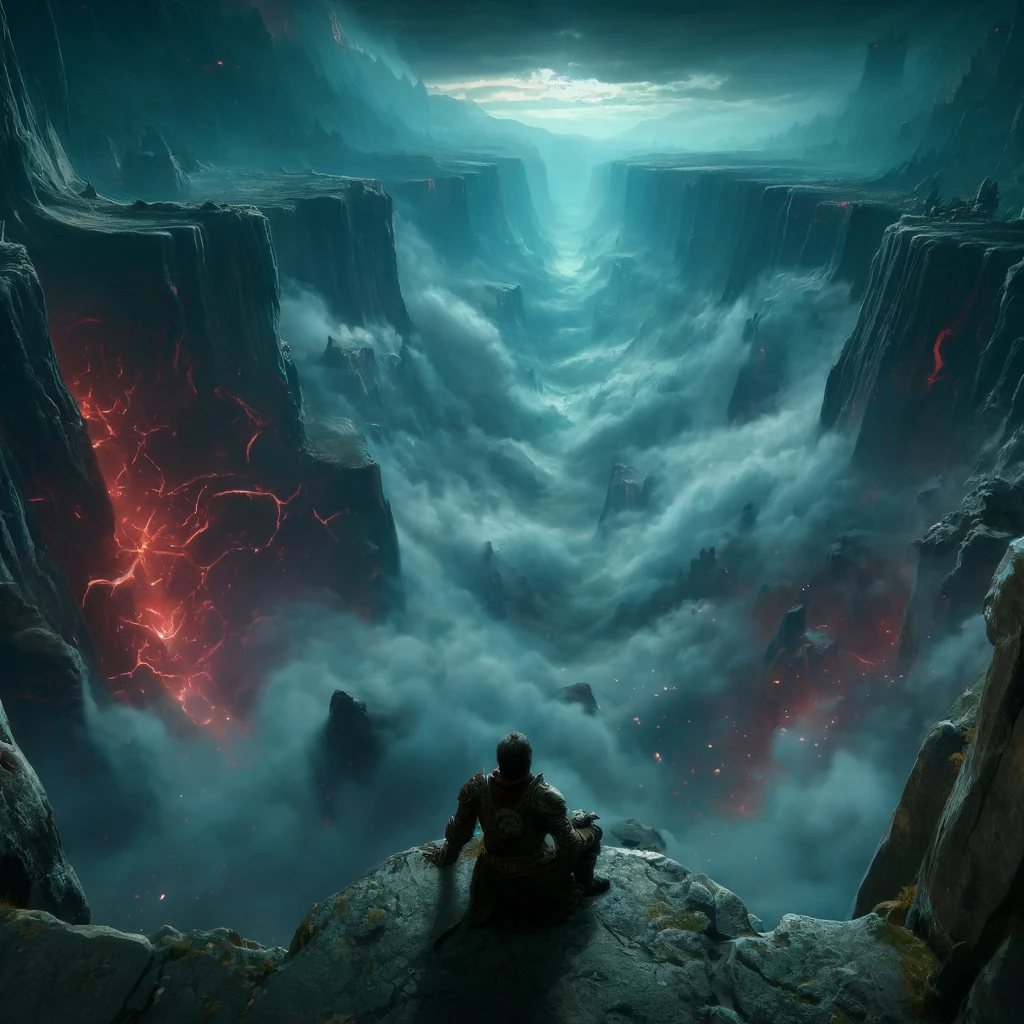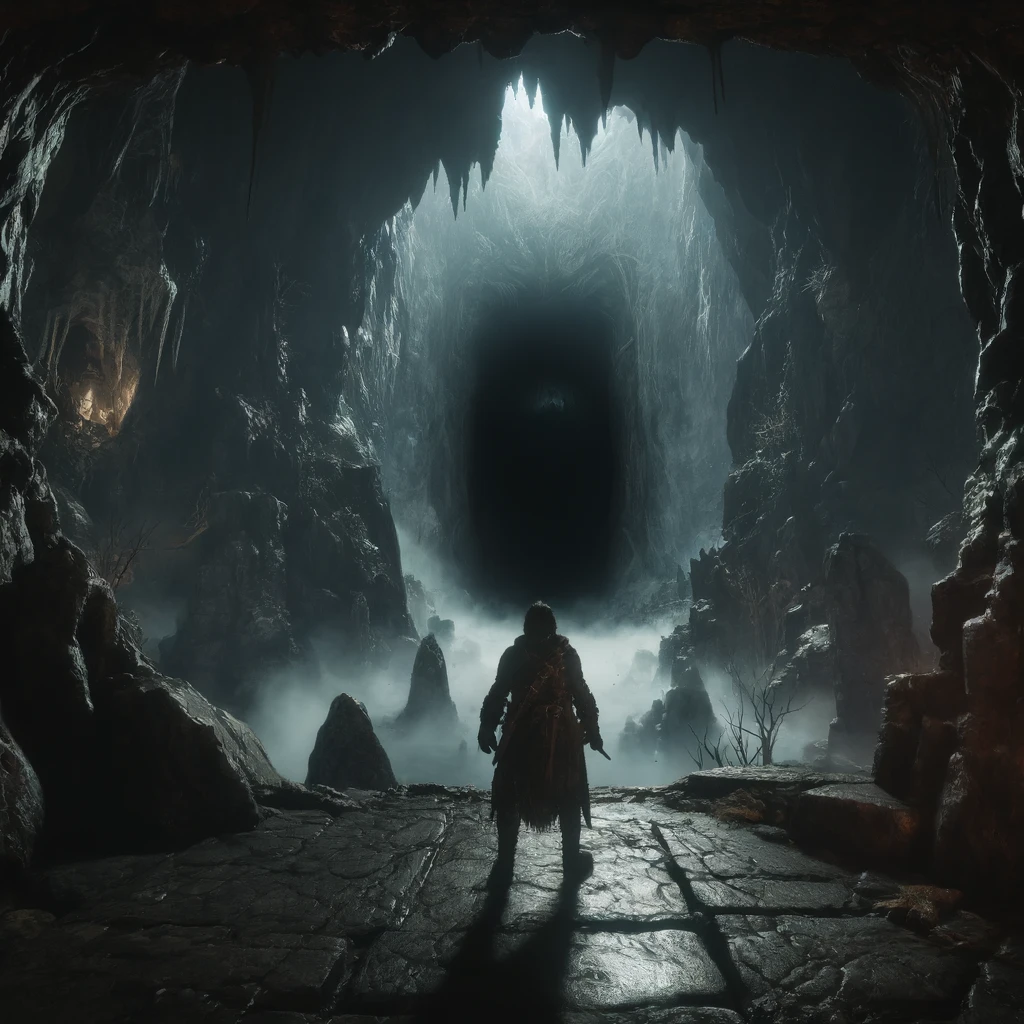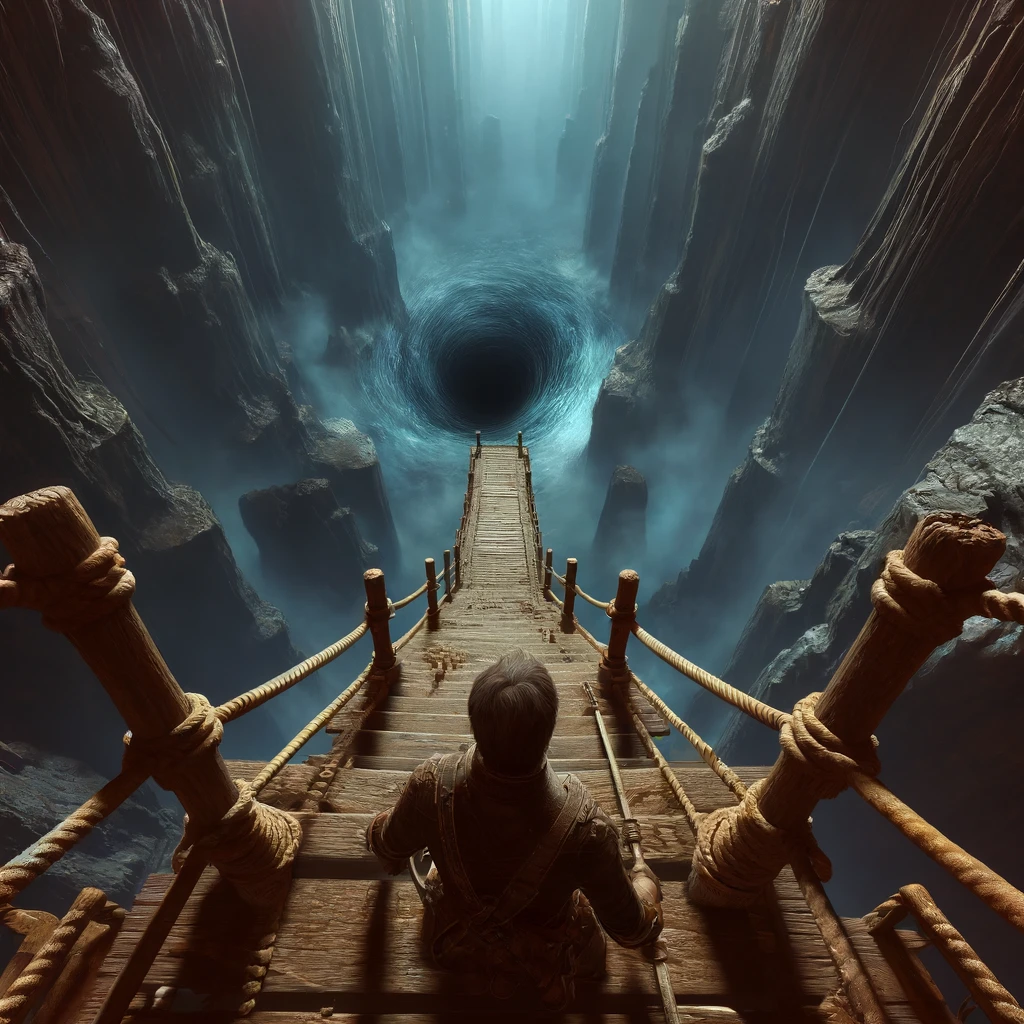
Introduction
The Abyssal River, often known simply as The River Styx or The Abyss River in various realms of Dungeons & Dragons and Pathfinder, serves as one of the most harrowing and lore-rich locations within these fantasy role-playing games. This river of lost souls, madness, and despair, marks the boundaries between planes, serving as a passageway not only through the Lower Planes but also as a narrative vehicle through which endless tales of horror and intrigue flow. This comprehensive examination delves into the origins, mythology, and inherent perils of this cursed river, offering both players and game masters a glimpse into its dark waters and even darker implications.
Historical accounts whisper of the river's birth from the chaos of a universe ungoverned by order, a shadowy legacy that precedes the reign of the oldest gods. Legends recount how the river first pooled from the tears of a thousand tormented souls, banished to oblivion, their cries giving voice to the waters that now flow endlessly through the realms of the damned. It is said that these waters are not merely water but a fluid manifestation of despair and the eternal echo of anguish that permeates the dark crevices of the planes it touches.
In its dreadful course, the River Styx murmurs with the voices of the forgotten, carrying the wails of spirits whose names have been erased by its cursed flow. Travelers who dare navigate its treacherous currents speak of visions of their deepest fears reflected in its obsidian depths, each glance stealing away pieces of their soul, leaving them hollow. The river's banks are littered with the remnants of those too frail to withstand its sinister influence-twisted, gnarled carcasses of once-mighty adventurers and conquerors, now mere footnotes in its dark history. The Abyssal River is not a mere geographical feature; it is a malevolent entity, thriving on the despair it sows and the souls it corrupts.
Origins and Mythological Background
The River Styx is ancient, predating many of the gods and demons that now populate the multiverse. Its origins are shrouded in the mists of creation, tied to the formation of the planes themselves. In both D&D and Pathfinder, the river is often depicted as arising from the chaos of Limbo, flowing through the Abyss, and winding its way through the various layers of Hell, serving as a rare constant in the ever-shifting landscape of the lower realms.
Mythologically, the river is said to be the embodiment of oblivion and forgetfulness, its waters a literal manifestation of these concepts. To drink from it or even to touch its waters is to court madness and memory loss, a fate that has befallen many unwary travelers and ambitious demons alike.
The River Styx, with its chilling, ever-black waters, is more than a boundary between the planes-it is a barrier to sanity and life itself. As it cuts through the fabric of the multiverse, it absorbs the essence of the Abyss, infusing its currents with pure malice and despair. This infusion taints the river, turning it into a conduit for the darkest magics and foulest creatures imaginable. The banks of the Styx are not made of mere earth and stone but are composed of the compacted souls and remnants of forgotten civilizations, crushed under the weight of their own doom and woven into the very landscape that borders this infernal river.
Within the lore of the Styx, there are tales of entire armies that have vanished into its depths, seduced by the siren call of its cursed waves. These stories speak of warriors so driven by power and conquest that they sought to cross the river at its most treacherous points, only to be swallowed whole, their armored husks now permanent fixtures beneath the Stygian waters, serving as grim reminders of the river's deadly embrace. The creatures that inhabit these waters are no less terrifying: from the soul-eating Stygimolochs to the spectral reavers that patrol the river, each being is a nightmare born from the river's accursed legacy.
Echoing through the corridors of time are the chants of ancient cults that worship the Styx as a divine entity. These cults believe that the river itself possesses consciousness and that by offering sacrifices into its dark waters, they can appease the ancient currents and gain forbidden knowledge. The rituals performed on its shores often involve the darkest of magics, calling forth beings from beyond the veil who seek the river's power for their own malevolent purposes. These ceremonies are fraught with peril, as the river demands more than what is willingly offered, often claiming the minds and spirits of the cultists themselves.
Thus, the River Styx remains a spectral monument to despair and ruin within the multiverse, its currents forever a testament to the unyielding and merciless nature of the realms it traverses. It serves not only as a physical barrier but as a profound existential challenge to any who dare its crossings, making it one of the most feared locations in all of Dungeons & Dragons and Pathfinder lore.

The Course of the Abyssal River
The River Styx's course is not fixed; it is as capricious as the planes it traverses. It flows through the Abyss, connecting its myriad layers in a tangled, ever-changing route. In the Pathfinder universe, it also touches upon the realms of the Outer Sphere, bringing its baleful influence to places as far-flung as the Boneyard and the Maelstrom. The river's nature makes it a strategic route for transportation and commerce among the fiendish populations, though its use is fraught with peril.
Dangers of the Abyssal River
The River Styx is perilous, its primary danger being its waters, which steal memories and erode the mind. This feature makes it a favored tool for punishment among the devils of Hell and the demons of the Abyss, who use it to torment souls and erase inconvenient truths. The river is also populated by monstrous creatures, some native to its dark waters, others drawn by the misery it embodies:
- Stygian Lurkers: Serpentine beasts that lie beneath the murky waters, waiting to drag souls into the depths.
- Memory Wraiths: Ghostly figures that skim across the river's surface, seeking to absorb the forgotten memories of those who touch the water.
- Ferrywraiths: Cursed souls of former ferrymen who now pilot ghostly vessels, offering passage for a price, but often betraying their passengers to eternal damnation.
Role in Campaigns
For players and game masters, the River Styx can serve multiple narrative functions in a campaign:
- Boundary and Barrier: It can act as a natural barrier that players must overcome, requiring them to find safe passage or risk the dangerous waters.
- Plot Device: The river's ability to erase memories can serve as a plot device, introducing elements of mystery and discovery into a campaign.
- Source of Conflict: Control over passages across the River Styx can be a source of conflict between demonic lords, with players caught in the middle.

Crafting a Stygian Adventure
When creating an adventure centered around the Abyssal River, consider the following elements to heighten the sense of danger and the eerie atmosphere:
- Mysterious Guides: Introduce characters who claim to know safe paths across the river but may have their own mysterious agendas.
- Lost Memories: Utilize the river's memory-stealing properties to create personal stakes for the characters, such as recovering lost memories or rescuing a companion from the river's curse.
- Horrific Encounters: Design encounters with the river's native denizens, forcing players to face the physical and psychological horrors that lurk in the waters.
The Abyssal River, with its ominous currents and haunting mists, transcends its role as mere geography. It is a stark emblem of the inevitable descent into madness that the denizens of the Lower Planes both fear and worship. As it snakes through the infernal landscapes, it acts as a siren call to the souls of the damned, drawing them towards oblivion with the promise of forgetting their eternal torment. Here, the very waters whisper tales of ancient evils, forgotten gods, and the endless struggles of powers too great and terrible to comprehend.
For those who dare navigate its cursed waters, the River Styx offers a path steeped in peril. It is said that to sail upon the Styx is to challenge fate itself. The river's capricious nature means that its course might change without warning, stranding travelers in hostile realms or delivering them into the clutches of demonic entities. Every eddy and whirlpool hides potential doom, and the fog that clings to its surface obscures not just the sight but also the line between reality and nightmare.
The river's influence extends beyond its banks. It weaves into the fabric of the Lower Planes, a constant thread in the tapestry of chaos that defines these realms. Its presence diminishes hope, intensifying the despair that fills these dark territories. To speak of the Abyssal River is to recount endless stories of sorrow, betrayals, and the fall of heroes who once sought to conquer its depths or harness its powers for their own ends.
In campaign settings, incorporating the Abyssal River can add layers of complexity and depth to the narrative. Game masters can use the river as a central motif in quests, challenging players to not only confront physical adversaries but also battle the existential dread that the river embodies. Whether serving as the setting for an epic battle, the mysterious destination in a quest for a lost artifact, or the haunting site of a character's spiritual trial, the Abyssal River remains an indelible mark on the landscape of Dungeons & Dragons and Pathfinder, a symbol of all that is terrifyingly sublime in these worlds of endless adventure.
The Abyssal River remains one of the most compelling and fear-inducing locations within the worlds of Dungeons & Dragons and Pathfinder. It serves not only as a physical obstacle but as a profound thematic element that embodies the chaos and despair of the Lower Planes. Adventurers beware: the river is not merely a passage through the multiverse-it is a voyage into the heart of darkness itself.






